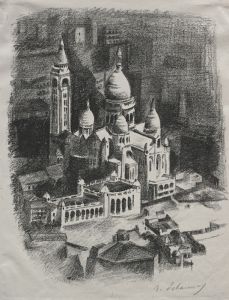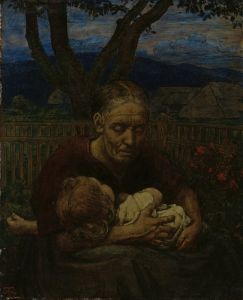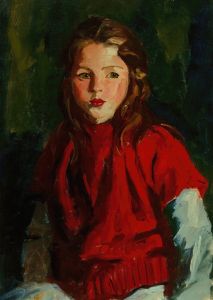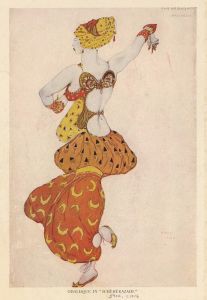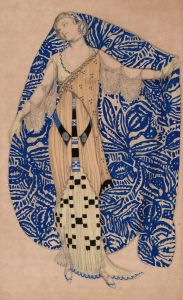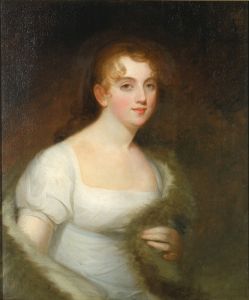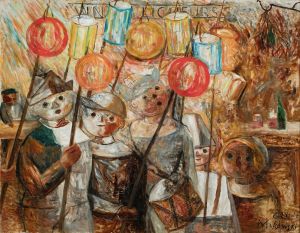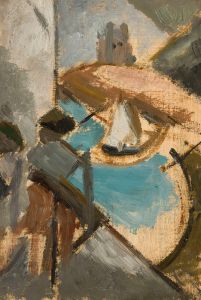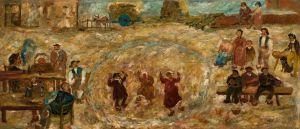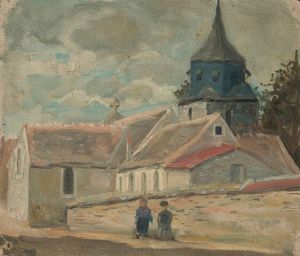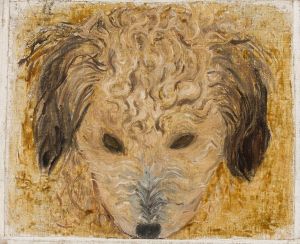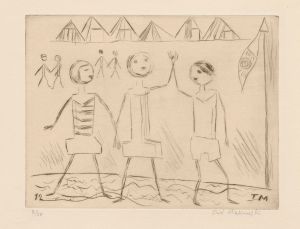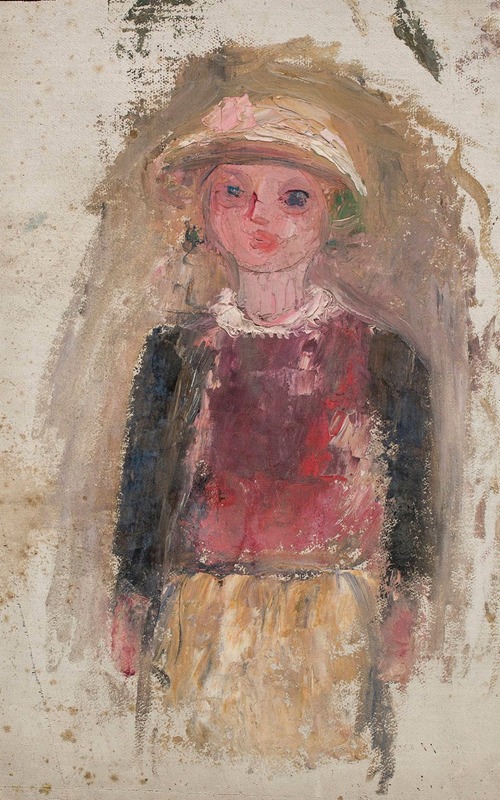
Little girl in a red waistcoat
A hand-painted replica of Tadeusz Makowski’s masterpiece Little girl in a red waistcoat, meticulously crafted by professional artists to capture the true essence of the original. Each piece is created with museum-quality canvas and rare mineral pigments, carefully painted by experienced artists with delicate brushstrokes and rich, layered colors to perfectly recreate the texture of the original artwork. Unlike machine-printed reproductions, this hand-painted version brings the painting to life, infused with the artist’s emotions and skill in every stroke. Whether for personal collection or home decoration, it instantly elevates the artistic atmosphere of any space.
"Little Girl in a Red Waistcoat" is a painting by the Polish artist Tadeusz Makowski. Makowski, born on January 29, 1882, in Oświęcim, Poland, is known for his distinctive style that blends elements of folk art with modernist influences. He studied at the Academy of Fine Arts in Kraków under the tutelage of prominent Polish artists such as Józef Mehoffer and Jan Stanisławski. Makowski later moved to Paris in 1908, where he became part of the vibrant artistic community and was influenced by the works of Paul Cézanne and the Cubist movement.
The painting "Little Girl in a Red Waistcoat" exemplifies Makowski's unique approach to portraiture and his fascination with childhood innocence and simplicity. The artwork features a young girl dressed in a red waistcoat, a piece of clothing that stands out due to its vibrant color. The red waistcoat is a focal point in the composition, drawing the viewer's attention to the central figure. The girl's expression is serene and contemplative, capturing a moment of quiet introspection.
Makowski's technique in this painting is characterized by his use of soft, muted colors and delicate brushstrokes, which create a gentle and intimate atmosphere. The background is kept simple and unobtrusive, allowing the viewer to focus entirely on the subject. This minimalist approach is typical of Makowski's work, where he often stripped down his compositions to their essential elements to convey a sense of purity and clarity.
Throughout his career, Makowski was deeply inspired by the themes of childhood and rural life. His works frequently depict children, often in traditional or folkloric attire, engaged in everyday activities. This focus on the innocence and simplicity of childhood can be seen as a reflection of Makowski's own longing for a simpler, more idyllic world, possibly influenced by his experiences living through turbulent times in Europe.
"Little Girl in a Red Waistcoat" is a testament to Makowski's ability to capture the essence of his subjects with sensitivity and nuance. The painting is not just a portrait but a window into the artist's perception of childhood as a time of purity and unspoiled beauty. Makowski's work continues to be celebrated for its emotional depth and technical skill, and "Little Girl in a Red Waistcoat" remains a significant example of his artistic legacy.
Tadeusz Makowski passed away on November 1, 1932, in Paris, but his contributions to the art world have left a lasting impact. His works are held in various collections and museums, and he is remembered as one of the notable figures in early 20th-century Polish art. "Little Girl in a Red Waistcoat" continues to be appreciated by art enthusiasts and scholars alike for its poignant portrayal of childhood and its masterful execution.





